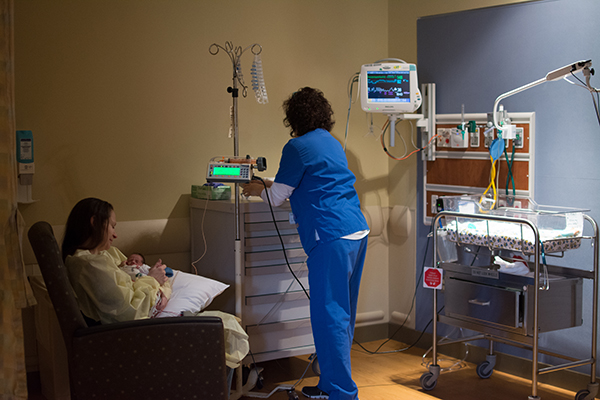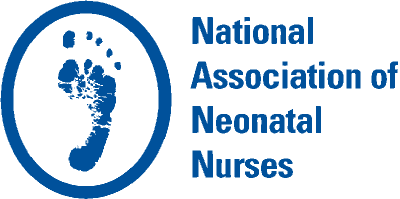Feature
The Certified Nurse
Andrea Ritchey, BSN RN CCRN-K CPST

What does it mean to be a certified neonatal nurse? Have you ever wondered what the initials CCRN or RNC-NIC truly represent? This article will discuss the benefits of specialty nursing certification, organizational support surrounding nursing certification, possible perceived barriers to overcome, and the development of a program to promote certification. The goal is to help you understand the impact neonatal specialty certification can have on you, the patients and families you care for, and your fellow colleagues.
Why Become Certified?
With the ever-changing and complex healthcare landscape, our patients are entering the hospital setting in a more critical state, requiring the expert care provided by interprofessional teams (Fleischman, Meyer, & Watson, 2011; "Safeguarding the patient", 2003). Nurses comprise the bulk of the healthcare workforce and are crucial members of the care team, holding significant influence on the care that patients and families receive (Fleischman et al., 2011; "Safeguarding the patient", 2003). This holds more value than ever in the neonatal intensive care unit (NICU) and other critical care settings, as direct care nurses are strategically stationed to spend the most time at the bedside with fragile patients.
Hallmarks of the certified nurse include expert knowledge, compassion, commitment to patient safety, enhanced critical thinking ability, the fostering of innovation, and the delivery of high-quality patient care (Boyle, 2017; Reich, Smith, & Del Guidice, 2016; "Safeguarding the patient", 2003; Vanairsdale, 2017). Evidence shows that patients cared for by certified nurses and nurses with higher education levels have more positive outcomes (Boyle, 2017; Reich et al., 2016). The 2010 Institute of Medicine (IOM) report, The Future of Nursing: Leading Change, Advancing Health, recommends that nurses function at the top of their field by striving for higher levels of education and training—including certification—with the goal of providing top-notch patient care (Reich et al., 2016). Following the 2010 IOM report, the Affordable Care Act’s Value-Based Purchasing (VBP) initiative was created by the Centers for Medicare and Medicaid Services (CMS), which emphasized providing optimal and efficient patient care while aiming to decrease healthcare costs (Reich et al., 2016).
Patients and families also are becoming more aware of the prevalence of medical errors and the perceived importance of nursing certification. Naturally, they are seeking institutions that place value in a highly skilled healthcare workforce to care for them and their loved ones ("Safeguarding the patient", 2003). By strengthening the knowledge of the nursing workforce, patients receive better care, develop fewer hospital-acquired conditions, have lower mortality rates, and have decreased lengths of stay (Boyle, 2017; Krapohl, Manojlovich, Redman, & Zhang, 2010; "Safeguarding the patient", 2003). Higher numbers of certified nurses also have been associated with lower rates of healthcare-associated infections such as central line–associated bloodstream infections (CLABSIs) and methicillin-resistant Staphylococcus aureus (MRSA) infections, which pose a serious threat to the neonatal population (Boev, Xue, & Ingersoll, 2015; Boyle, 2017;).
Benefits of certification do not stop with increased patient care outcomes. Nurse satisfaction and retention also increase with obtaining nursing certification because of enhanced opportunities for professional development, which is particularly evident in magnet-designated hospitals (Altman, 2011; Krapohl et al., 2010; Vanairsdale, 2017). Attracting and retaining the most qualified and competent nurses can be a challenge, but providing nurses the opportunities to expand their education and knowledge through certification has the potential for a large return on investment, potentially millions of dollars annually, for healthcare organizations (Reich et al., 2016; "Safeguarding the patient", 2003). Nurses strive for certification to earn the respect of their colleagues, feel empowered, further themselves in their professional journey, and have the ability to translate their expert knowledge into optimal patient care (Altman, 2011; Krapohl et al., 2010; Vanairsdale, 2017).
Breaking Down Barriers to Certification
In her 2017 article “The Value of Nursing Certification: Revisited and Reinforced,” Dr. Joyce Fitzpatrick states that only about one-third of the United States’ 3.1 million nurses are specialty certified. Even though there are many advantages that come with certification, literature shows that key barriers exist that may contribute to lower certification rates (Altman, 2011; Reich et al., 2016). Some of the most common perceived barriers to achieving certification are the cost of the exam and certification review courses, lack of recognition or reward, lack of knowledge about the process or the needed steps to attain initial certification or recertification, and the time required to adequately prepare for certification (Altman, 2011; Reich et al., 2016).
One way to combat the cost of the exam or certification preparation course is to collaborate with leadership at your institution (Altman, 2011; Fleischman et al., 2011; Reich et al., 2016). Some institutions offer incentive programs that either pay for the initial certification fee or offer reimbursement once the exam has been passed or completed (Fleischman et al., 2011; Reich et al., 2016). Other institutions have had success in partnering with professional nursing organizations that allow nurses to sit for the certification exam more than once without requiring additional fees (Reich et al., 2016). It is important to speak with your clinical educator, manager, or direct supervisor about options for financial assistance, incentive opportunities, and recognition programs as you embark on your certification journey.
Clinical experts, nursing team leaders, educators, professional organizations such as NANN, and the accrediting bodies for nursing certifications can support nurses in learning the certification process (Fleischman et al., 2011; Reich et al., 2016). You can find detailed information online regarding eligibility requirements and steps to attaining neonatal certifications such as the RNC Certification for Neonatal Intensive Care Nursing (RNC-NIC) and the Neonatal Critical Care Registered Nurse (CCRN) (American Association of Critical-Care Nurses (AACN), n.d.; National Certification Corporation (NCC), 2018).
Developing a Certification Preparation Program
With little available research that explores increasing neonatal certification rates, one option is to utilize your organization’s existing educational resources in conjunction with a formal neonatal certification preparation program. The key to success is the engagement of experienced certified nurses, formal and informal nurse leaders, and nurses seeking certification (Altman, 2011; Fleischman et al., 2011). Some ways to initiate an internal neonatal certification program are speaking with nursing administrators about financial impacts and budgetary requests, researching certification preparation course availability in your area, seeking out already-approved curricula through your institution’s learning management system, and setting goals within your department (Altman, 2011; Fleischman et al., 2011; Reich et al., 2016).
Other efforts to promote engagement during the certification process include incorporating group study sessions into the course outline, considering a course commitment statement to be signed by participants, and providing staff recognition to celebrate successes (Altman, 2011; Fleischman et al., 2011). Adopting a pre- and post-test measurement for self-assessment and guided study recommendations, as well as tracking the number of participants successfully passing either the Neonatal CCRN or RNC-NIC exam within a defined time frame post-preparation course assist in measuring outcomes for further program development and continued leadership support (Altman, 2011; Fleischman et al., 2011; Reich et al., 2016).
Frequently, nurses dismiss certification as an immediate future goal due to some of the perceived barriers discussed above (Altman, 2011; Reich et al., 2016). Instead of focusing on potential barriers, embrace the culture of certification by viewing it as an opportunity to develop frontline nursing leadership skills, encourage neonatal specialty certification, and make an impact on your own professional development, your colleagues, and most importantly, the patients and families you care for every day.
References
Altman, M. (2011). Let’s get certified: Best practices for nurse leaders to create a culture of certification. Advanced Critical Care, 22(1), 68-75. doi:10.1097/NCI.0b013e3182057772
American Association of Critical-Care Nurses. (n.d.). CCRN (Neonatal). Retrieved from https://www.aacn.org/certification/get-certified/ccrn-neo
American Association of Critical-Care Nurses. (2003). Safeguarding the patient and the profession: The value of critical care nurse certification. American Journal of Critical Care, 12(2), 154-164.
Boev, C., Xue, Y., & Ingersoll, G. L. (2015). Nursing job satisfaction, certification and healthcare-associated infections in critical care. Intensive and Critical Care Nursing, 31, 276-284. doi:10.1016/j.iccn.2015.04.001
Boyle, D. K. (2017). Nursing specialty certification and patient outcomes: What we know in acute care hospitals and future directions. Journal of the Association for Vascular Access, 22(3), 137-142. doi:10.1016/j.java.2017.06.002
Fitzpatrick, J. J. (2017). The value of nursing certification: Revisited and reinforced. Journal of the Association for Vascular Access, 22(3), 131-134. doi:10.1016/j.java.2017.07.002
Fleischman, R. K., Meyer, L., & Watson, C. (2011). Best practices in creating a culture of certification. Advanced Critical Care, 22(1), 33-49. doi:10.1097/NCI.0b013e3182062c4e
Krapohl, G., Manojlovich, M., Redman, R., & Zhang, L. (2010). Nursing specialty certification and nursing-sensitive patient outcomes in the intensive care unit. American Journal of Critical Care, 19(6), 490-498. doi:10.4037/ajcc2010406
National Certification Corporation. (2018). Certification exams. Retrieved from https://www.nccwebsite.org/Certification/HowdoIapply.aspx
Reich, J., Smith, J., & Del Guidice, M. (2016). A certification support program: Impact on nurse autonomy, nursing practice, outcomes and culture. Nurse Leader, 14(5), 335-338. doi:10.1016/j.mnl.2016.06.005
Safeguarding the patient and the profession: The value of critical care nurse certification. (2003). American Journal of Critical Care, 12(2), 154-164.
Vanairsdale, S. (2017). How specialty certification influences professional practice. Journal of Nursing Administration, 47(3), 129-130. doi:10.1097/NNA.0000000000000452

